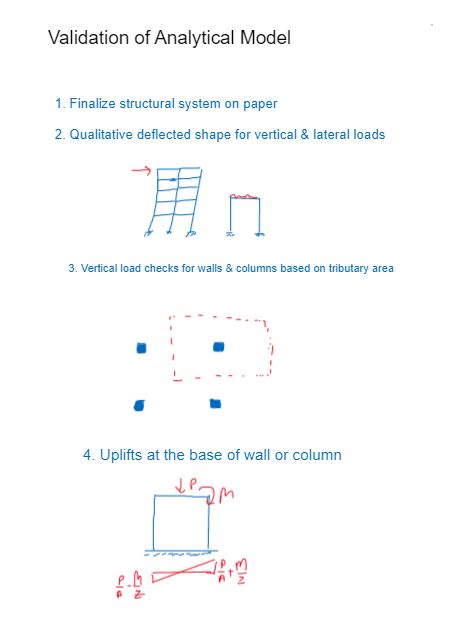With easy accessibility & too much use of analytical software for structural design, it has become extremely important to verify the analytical model before these are used for detailed design.
I follow these steps to check the sanity of the analytical model and make sure it behaves the way I intend.
[1] Even before starting with an analytical model have a clear understanding of load paths for both vertical & lateral forces. It is even better to have hand sketches for structural framing & structural systems.
[2] The first thing to look once you have run the analytical model is the qualitative deflection of the building for both vertical & lateral loads. (This provides great insight if there is any geometric error or if the load transfer is not happening through certain members).
This can be observed globally for the entire model or locally for important locations.
[3] The next thing is to check vertical load on columns & walls. Verify loads coming down on columns using the tributary area method & respective floor loads.
You can also verify the reactions at support for vertical loads.
[4] Check for any uplifts at the base of structure for all of load combinations. If there are such locations you might need to add more stability walls or handle the upliftment in some other way.
[5] Once these checks are made to the analytical model preliminary design should be done to verify the member sizes.
This is a post to discuss the validation of analytical model. A few more checks need to be made to check torsional & other irregularities and modal behavior of the structure, these are not included in this post.
Any comments or suggestions are welcomed.

Comments are closed